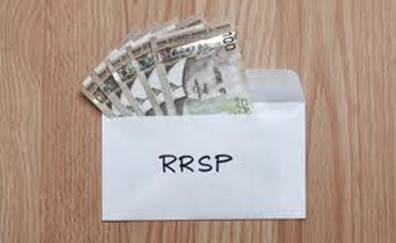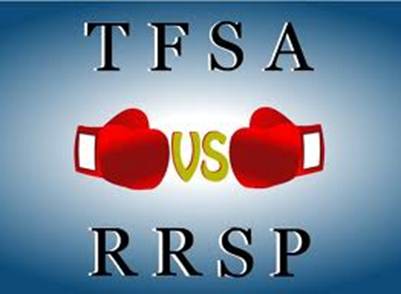Some of what you
think you know about RRSPs might just be wrong

It’s pretty hard not to notice that
RRSP season has arrived once again; the press, TV, social media, billboards,
and windows are awash with advertising and commentary on these tax-assisted
retirement savings vehicles, usually touting the superiority of a particular
financial institution’s RRSP-related offerings.
But should you even be contributing to
an RRSP this February? If so, how can you make the most of these plans? And if
not, why, and what should you do instead? Here are some planning points to
consider in formulating a suitable RRSP strategy for yourself and your spouse
(if you have one) this saving season.
Should You Have an RRSP?
The first question to ask in face of
the promotional onslaught is whether you should even have an RRSP. While many
people can benefit from the tax deferral that these plans provide, a great many
other retirees have discovered often too late to do anything about it that
RRSPs can also cost you a lot of money.
It’s sadly ironic that those whose
retirement income prospects are good many derive substantial benefits from
RRSPs while those whose retirement incomes are or will be modest may derive the
opposite outcome. The reason has to do with the tax-free Guaranteed Income
Supplement (GIS) available to all low-income retirees once they reach age 65.
Except for your first $3,500 in
employment income, GIS benefits are reduced by 50 cents for each dollar of
income from sources other than Old Age Security (GIS is actually an OAS
program). As a result, thousands of retirees are discovering to their chagrin
when they turn 65 that they’re only ever going to receive half their registered
saving because the other half will be lost through GIS clawbacks.
“It ‘s shame, the way GIS is a
affected by RRSP withdrawals,” says Brettstrano, a financial adviser with
Edward Jones Canada in Mississauga, ON. “In many of these cases, people were
buying RRSP before they had any idea where they would be financially when they
did decide to retire.”
How much income you can earn before
GIS disappears is outlined in the box on page 49, and any single or couple
whose retirement income is or will be lower than applicable limit should
probably avoid RRSP contributions. In fact, retirees with very low income
prospects are usually better off getting rid of their RRSP as quickly as
possible, even if it means taking a sizeable tax hit, so as to eliminate that
GIS clawback for years to come.
“You need to do an analysis of what
the tax would be on that lump sum, compared to what you’d lose in tax and GIS
benefits if you just made your annual RRSP withdrawals,” says Dave Ablett,
director of tax and retirement planning at Investors Group in Winnipeg. “That
way you can determine which strategy is best on an after tax basis.”
A better savings option for those with
low retirement income would be to invest in a Tax Free Saving Account (TFSA).
No tax deduction is available for TFSA contributions, but withdrawals aren’t
considered income for tax or GIS purposes. Meanwhile, as wih RRSPs, money in
your TFSA compounds tax-free. (TFSAs are discussed in more detail in the box on
page 51.)
Pay Down Debts First

If you have personal debts, they
generally should be repaid before you put any money into RRSP or TFSA because
you must pay them with after-tax dollars. If, for example, you have a $10,000
debt and the interest rate is 10 per cent per annum, and your marginal tax rate
is 33 per cent, you‘d have to earn $1,500 to pay the interest for a year
(one-third of that $1,500 would go to taxes). Wipe out the debt and that’s
equivalent to earning a 15-per cent yield, and it’s guaranteed. With some
credit cards, your guaranteed return on repayments could be 40 per cent or more
(at higher marginal tax rates).
If the interest rate on your debt is
low some mortgages and secured lines of credit are three per cent or less, for
example- then the premium on debt repayment is much less. You must work out
what the loan is costing you in after-tax terms and compare that to the return
you’d get from investing your money in an RRSP instead.
“If you have credit card debt, then,
absolutely, you should use all your money to get rid of it as quickly as
possible,” Strano says. “But when it comes to, say, paying off the mortgage
versus contributing to an RRSP, it gets trickier. In today’s low-interest
environment you can get an awfully good mortgage rate. If you can invest and
earn more in an RRSP, and you can afford the mortgage and the RRSP contributions
with your cash flow, it might be best to contribute each year and let the
mortgage take its course.”
Another instance in which RRSP
contributions may not make sense is if your current income is lower than it
will be when you retire. If, for example, your current income is taxed at 25
per cent but your retirement income will be subject to a 33 per cent tax, you
may be better off using to TFSA instead of an RRSP; better to pay 25 per cent
now and save 33 per cent later than vice versa.
“One rule of thumb is that if your tax
rate in retirement is the same or higher than in the accumulation years, you
should maximize your TFSA before you use your RRSP,” Ablett says, adding that
if the opposite is true, you should maximize your RRSP before using the TFSA. “If
you’ve maximized your RRSP and still have savings, then you should maximize you
TFSA as well.”
In other words, if your retirement
income is likely to be higher than those GIS limits, you’re personally debt
free, and your current income is higher than your anticipated future income,
you should certainly consider contributing to an RRSP this and every year, and
generally should contribute the maximum. In addition to the benefits of
tax-free compounding and RRSP can be a form of enforced savings because of that
tax hit on withdrawals a valuable end in itself.
RRSP can also (in most Canadian
jurisdictions) be transferred directly to designated beneficiaries, bypassing
the estate and probate. But nay such transfer may give rise to a sizeable tax
bill unless transferred to a spouse or qualifying dependent, in which case a
tax-free rollover may be permitted and the beneficiary will pay tax down the
road upon his or her withdrawal of those monies. In some Canadian
jurisdictions, RRSPs can even be creditor proofed, so they may be an invaluable
estate planning tool.
A
better savings option for those with low retirement income would be to invest
in a Tax Free savings Account (TFSA).